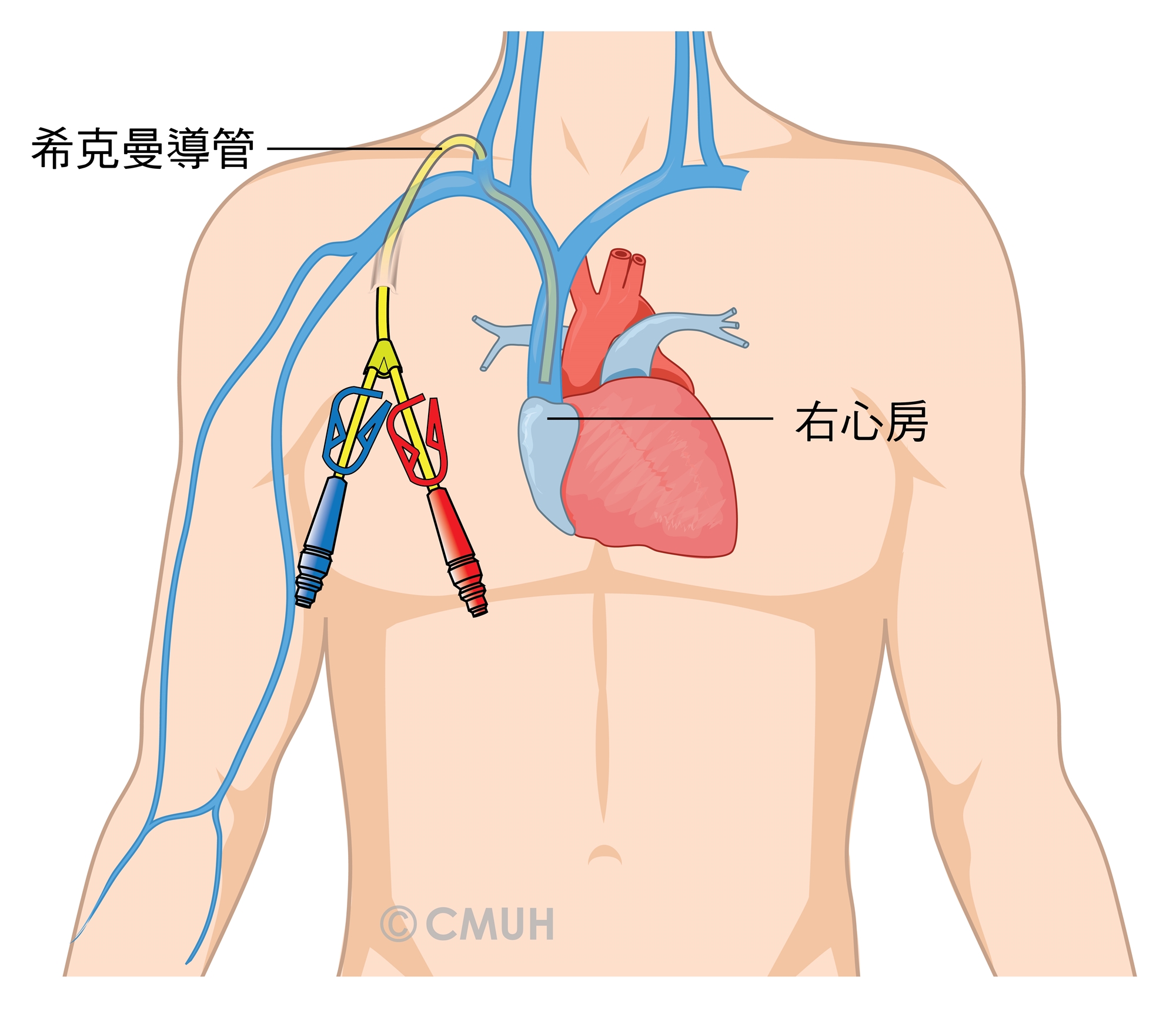A Hickman catheter is an exposed artificial vascular graft, usually with 2 to 3 branches. One end of the catheter is inserted surgically into the right atrium via the superior vena cava from the cephalic vein, while the other end goes subcutaneously through the skin from the right clavicle (between the nipple and the midline of the chest).

Dressing material preparation
- Alcohol (for 1 week) and alcohol-based povidone-iodine (for 1 month) or Easy Antiseptic Cleansing Solution (2% Chlorhexidine) alone.
- Oral cotton swabs.
- 2 * 2 gauze.
- Tegaderm dressing (large) or Mefix.
- Hand sanitizer and skin protection spray.
Dressing change steps
- Prepare the environment (close windows, electric fans, keep clear around dressing change).
- Wash your hands.
- Fix the patient's clothes, tear off the Tegaderm package (cut out the Mefix) and place it where you can get it.
- Tear off the old Tegaderm dressing (if it is not easy to remove, apply alcohol over the dressing to remove it and avoid pulling the line).
- Observe whether there are redness, swelling, heat, pain and secretion at the injection site, and observe the length of the exposed line.
- Disinfection with alcohol-based povidone-iodine and alcohol:
- Prepare 3 sterile cotton swabs dipped with alcohol-based povidone-iodine and alcohol. First, use a cotton swab dipped with alcohol-based povidone-iodine to perform circular disinfection from the inside out, centering on the injection site (The diameter of disinfection range should be more than 10cm. During the disinfection process, move the Hickman catheter line up slightly to facilitate the disinfection of the lower skin). After the povidone-iodine is dried, use a cotton swab moistened with alcohol to sterilize the injection site circularly from the inside out, wait for the alcohol to dry, and repeat the previous action for 3 times.
- If there are traces of povidone-iodine on the skin after disinfection, wipe them away using a sterile cotton swab moistened with alcohol until clean (wipe them from inside to outside in a circular way).
Disinfection using Easy Antiseptic Cleansing Solution
- Use a cotton swab dipped with Easy Antiseptic Cleansing Solution to perform circular disinfection from the inside out, centering on the injection site (The diameter of disinfection range should be more than 10cm. During the disinfection process, move the Hickman catheter line up slightly to facilitate the disinfection of the lower skin), and wait for the solution to dry.
- When using Easy Antiseptic Cleansing Solution for disinfection, it is not allowed to be used together with povidone-iodine and normal saline solution.
- Use hand sanitizers.
- Tegaderm: After covering the 2 * 2 gauze at the insertion point, apply skin protection spray to the surrounding skin, remove the gauze after spraying, and cover it with Tegaderm (press outward from the center during the covering process to avoid too much air in the dressing).
- Cover it with Mefix: Take out one piece of 2 * 2 gauze, fold it and place it under the catheter, and cover the insertion point with another piece. Apply the skin protection spray to the surrounding skin, and then use Mefix to cover it.
Time for dressing change
- If Tegaderm dressings are used every 7 days, dressings should be changed regularly; if Mefix is used, dressings should be changed daily.
- When blood seeps around the wound and the dressing becomes wet or falls off, it should be replaced immediately.
Notes for home care
- Observe the wound daily for redness, swelling, heat, pain and purulent secretions.
- Plastic bags or plastic wrap must be used when washing your body to avoid contact with water and prevent infection.
- Avoid wide arm rotation activities (e.g. swimming, tennis, badminton, etc.).
- The arm where the catheter is inserted can be used for general activities, such as cooking, washing dishes, sweeping, mopping, etc., without any limitation to bending and stretching, but excessive exertion should be avoided.
- It is strictly forbidden to use sharp tools such as scissors and knives near catheters.
- When you return to the clinic, doctors and outpatient nurses will give you a leaflet for flushing the catheter. Show this leaflet for line flushing in the outpatient injection room on the 2nd floor of the Cancer Building to avoid obstruction.
(Catheter flushing time: Monday-Friday 8am-4pm).

